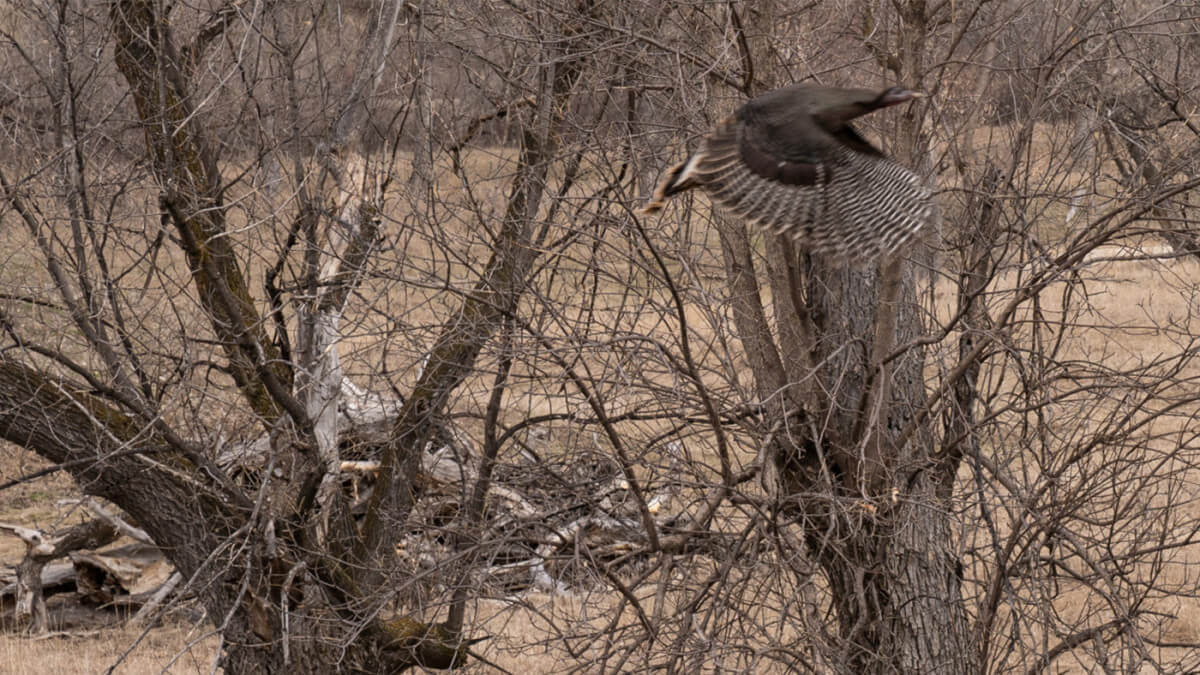- Savage Blog
- Roosted Aint Roasted - Best Way to Start Your Turkey Hunt
Roosted Aint Roasted - Best Way to Start Your Turkey Hunt

After 20 years of turkey hunting, I can assure you the old adage of “roosted aint roasted” is still alive and well... but it's the best way to start your turkey hunt. If you want to transform from a casual turkey hunter into a consistent turkey killer, roosting gobblers is entirely critical.
How To Roost A Gobbler
In most states it’s legal to hunt turkeys from dark to dark, dawn to dusk. It’s easy to become hyper-focused on your daybreak hunts—the magic hour when the woods come alive and Ol’ Tom gobbles from the limb. But when that bird finally decides to fly down for his morning exploits, your odds of getting him into Renegauge range will be infinitely higher if you spent some time with him the night before.
Male turkeys—both jakes and toms—typically gobble at least once in the springtime before bedtime when they fly up and start to nod off in their chosen tree. Sure, some turkeys won’t say a peep for one reason or another (weather conditions, hunting pressure, bad attitudes), but usually you can find at least one vocal gobbler on any given tract of land with a decent population of turkeys. And if gobblers aren’t sounding off on their own accord, most times you can trick them into opening their beaks with a shock call such as a crow call or owl hooter.
Hearing a roosted gobbler is only the first step in roosting. It should be your goal to pinpoint that bird as specifically as possible—ideally, to the exact tree he is in or even the precise tree branch upon which he’s standing. As long as he’s gobbling, use it to your advantage and try to close the distance as tightly as you safely can without getting busted. If he’s far away, run toward him! Don’t waste any time, because every evening gobble might be his last before he hunkers down to sleep. Use binoculars. It’s usually unrealistic to spot him on the limb without him seeing you first, so once you’ve pinpointed him to the best of your ability, mark his suspected location in HuntStand.
Moving In For The Kill
Back at camp, digitally scout the gobbler’s location to analyze the terrain and plan your morning attack. Now you need to think like a turkey. Where is he likely to fly down and in what direction is he likely to travel? You want to be somewhere on that course. I prefer to slip in early, in the dark, and be within sight of a roosted gobbler so I can watch him, read his body language, and play on his emotions with my calling. Most times I will put out a single feeder hen decoy, or a jake/hen combo to challenge his ego—but only if I can get away with staking a decoy in the dark. Also, by having him in sight, if he flies down and goes somewhere unexpected, I can get a bead on him and try to make a wide circle to get in front of him. You’ll find that once a gobbler hits the ground and makes up his mind to go somewhere, typically there’s no changing his one-track mind. Just realize that if you’re going all in and slip into his bedroom, you can’t move a finger when it’s light enough for him to see. If you call to him at all, it will have to be a mouth call because it doesn’t require movement.
A spring gobbler has two main things on his mind when he wakes up: breeding and eating. In that order. Every morning, most toms broadcast their position to hens by gobbling on the limb. Yes, there are exceptions, but as a general rule this is the reality. Besides, if you’re hunting a silent gobbler, typically you’re better off moving on to a vocal bird that wants to play the game.
Usually a tom will gobble until a breeder hen shows up within sight, at which point he will fly down to her and try to breed. If this happens, you’re probably out of luck unless you’re sitting in range of that landing zone. The hen will almost always drag the gobbler away to some romantic location, and no decoy or calling from your end will stop it. That doesn’t mean you shouldn’t try calling because sometimes it can work to draw in the hen, but most likely if a hen comes marching toward a roosted gobbler, she’s there to do business. If you see a hen closing in to a roosted gobbler and you can get away with it without him seeing, scare her away—just wave your arms and she’ll get out of Dodge.
When you’re calling to a lonely gobbler on the limb, use seductive hen calls and escalate the intensity of your calling as needed. You might start with light purrs and clucks, and then ramp it up to yelping and cutting. Your goal is to get that gobbler so worked up that he can’t stand it anymore, and hopefully he will fly down and walk right into your lap. I’m sorry to report … most times this isn’t the outcome. It’s very difficult to kill a gobbler immediately after flydown, hence: “roosted ain’t roasted.” However, if you can start your day in Ol’ Tom’s bedroom, you’ll be well positioned to shadow him throughout the day and make moves until he makes a mistake.


